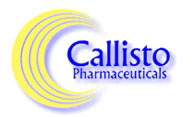ATIPRIMOD
Our lead drug candidate, Atiprimod, is an orally administered drug with anti-proliferative and anti-angiogenic activity. Our current strategy for this compound is to test the effects of atiprimod in treating in patients with multiple myeloma and in patients with low to intermediate grade neuroendocrine carcinoma. Callisto is currently conducting a multi-center, phase I/II, open label, dose escalation, MTD study of Atiprimod in patients ≥18 years of age with relapsed or refractory multiple myeloma (Protocol No. CP-101). In addition, Callisto is also conducting a multi-center, phase II, open-label study of atiprimod in patients ≥18 years of age with low to intermediate grade neuroendocrine carcinoma.
Pre-clinical efficacy data with atiprimod indicates that it has anti-proliferative, anti-angiogenic, and cytotoxic activity in multiple human tumor cell lines, including drug-resistant human multiple myeloma cell lines. Atiprimod simultaneously lowers serum IL-6 and VEGF, two growth factors generally recognized to play the major role in the pathophysiology of multiple myeloma in addition to lowering TNF-a and IL-1 levels, two other growth factors associated with the disease. An additional characteristic of atiprimod supporting its potential for the treatment of multiple myeloma is its ability to inhibit activated-osteoclast driven bone resorption, a key debilitating effect of multiple myeloma recognized to accelerate disease progression.
ATIPRIMOD
Our second lead drug candidate, L-Annamycin, is a drug from the anthracycline family (chemotherapy drugs which are derived from antibiotics). Our primary strategy for this compound is for treatment of acute lymphocytic leukemia (ALL) in adults and ALL or acute myelogenous leukemia (AML) in children. Callisto is currently conducting a multi-center, phase I/II, open label, dose escalation, MTD study of liposomal annamycin in patients ≥15 years of age with refractory or relapsed ALL (Protocol No. CP‑103). In addition, Callisto are also conducting a multi-center, phase I/II, open label, dose escalation, MTD study of liposomal annamycin in patients between the ages of 12 months and 21 years of age with refractory or relapsed ALL or AML (Protocol No. CP‑105).
The in vitro cytotoxicity of liposomal annamycin was tested on a panel of 4 different parental cell lines and their respective multidrug-resistant (MDR)-1 expressing cell lines (15). In all MDR cell lines tested (KB-V1, P388/Dox, CEM/Vbl, and 8226/R) there was minimal resistance to annamycin, whereas expected, resistance to doxorubicin was high. Studies with MDR modulators and metabolic inhibitors indicated significant differences in the cellular transmembrane transport systems between doxorubicin and annamycin and suggest that annamycin efflux is not mediated by P-glycoprotein MDR.
In vivo, liposomal annamycin has shown lack of cross-resistance in KB-VI human xenografts (an MDR-resistant cell line) and enhanced antitumor activity compared with doxorubicin in several mouse tumor models such as leukemia (L-1210), melanoma (B16), reticulosarcoma (M5076), and Lewis lung carcinoma cells. Results in KB and KB-V1 human xenografts demonstrate that liposomal annamycin was at least as effective as doxorubicin. Liposomal annamycin was more active than doxorubicin in a leukemia L-1210 mouse tumor model.
